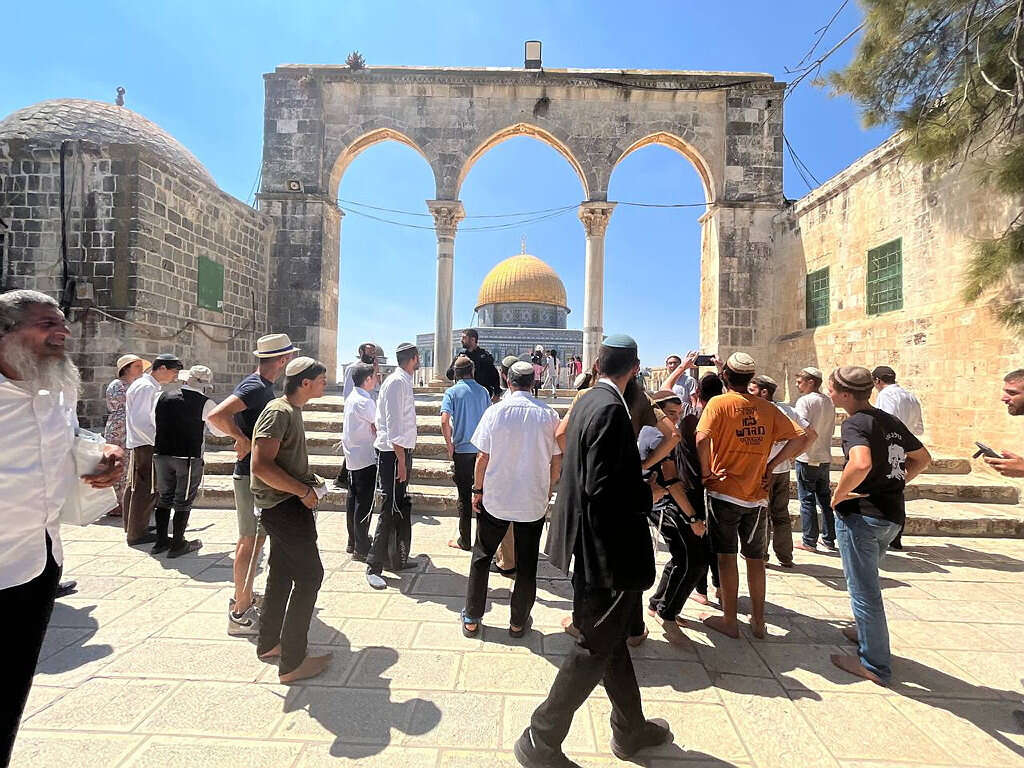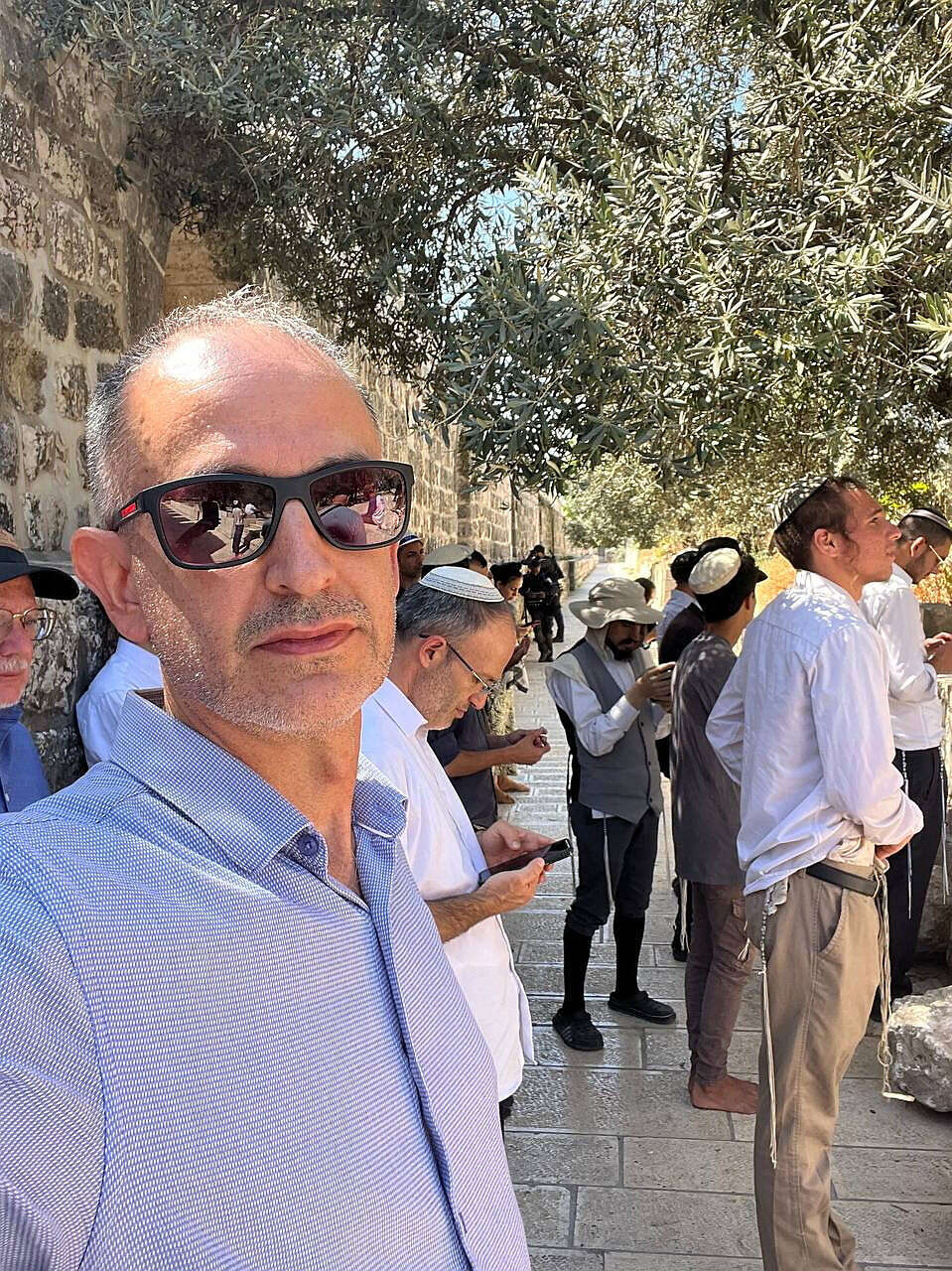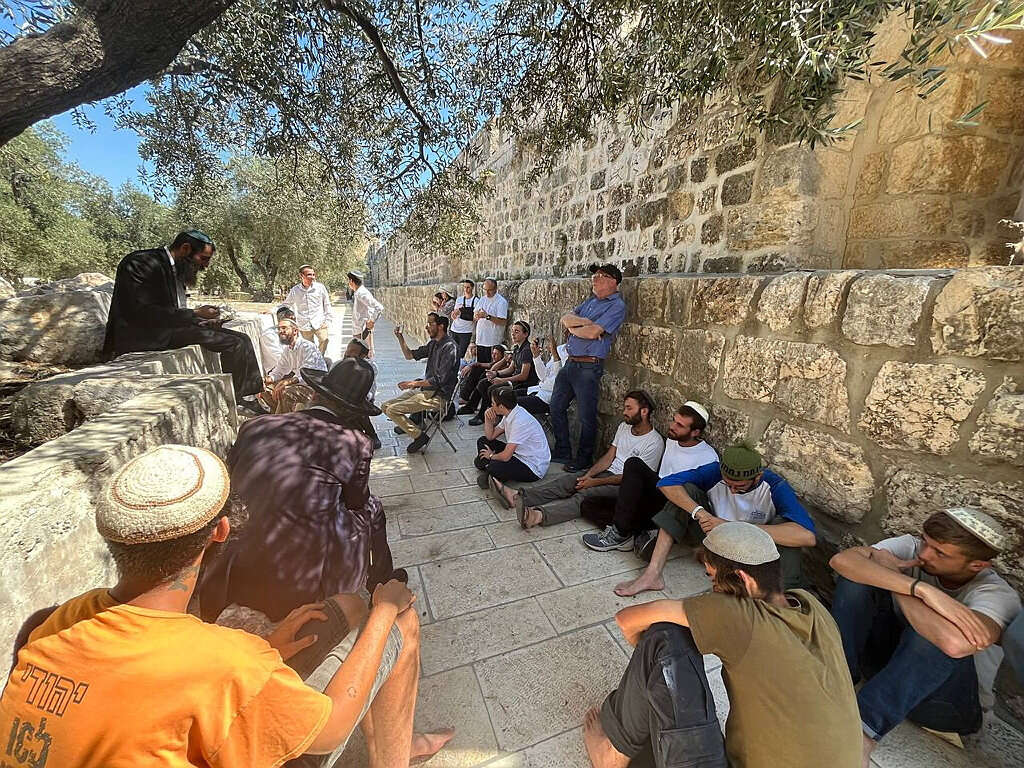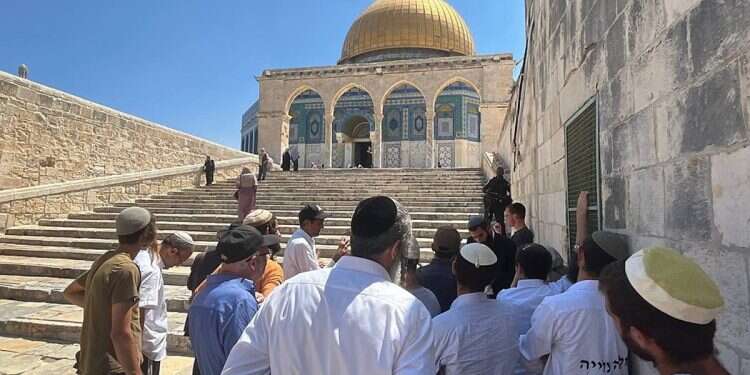In a delicate balance of religious devotion and political sensitivity, Jewish pilgrims are increasingly frequenting the Temple Mount in Jerusalem's Old City. Despite longstanding restrictions and tensions surrounding the site, sacred to both Jews and Muslims, visitors report a notable uptick in Jewish presence, with daily prayer groups and study sessions occurring under close police supervision.
It had been quite some time since I last set foot on the Temple Mount in Jerusalem's Old City, the capital of Israel. The prospect of visiting this holy site was both welcome and valuable, primarily to gauge the current atmosphere, but equally important – to quietly recite the "Shema Yisrael" prayer in this sacred space.
As I approached the entrance to the Mount, I encountered a group of South Korean tourists. One of them greeted me in surprisingly fluent Hebrew, inquired about my family roots, and even briefly conversed with me in German after I mentioned my grandfather Ernst's immigration to Israel from Germany. A friendly police officer approached, asking where I had come from. When I inquired about the situation on the Temple Mount, he smiled and replied, "It's like Switzerland here."
Tourists streamed past me en route to the Temple Mount, while the group of religious Jews I had joined waited respectfully for Rabbi Elisha Wolfson, head of the Drishat Zion Kollel. The young men, some barefoot, exchanged experiences about preferred ritual immersion sites, sitting alongside a small group of women, receiving an in-depth explanation about the place from one of their own.
The entrance for Temple Mount visitors is named "Hallel's Gate," memorializing Hallel Yaffa Ariel, who was tragically killed in 2016 by an attacker in her bed at home in Kiryat Arba at just 13 and a half years old. Jewish visitors and tourists are greeted by an impressive model of the Temple, bearing the biblical verse: "And let them make Me a sanctuary, that I may dwell among them." Nearby stands a large, informative sign detailing the visible remnants of the Temple on the Mount today, alongside a refreshment station offering hot and cold drinks.
Elkana, Rabbi Wolfson's son, an energetic young man with long, light-colored peyot, sports a shirt boldly proclaiming: "Temple Mount Yeshiva." He enthusiastically shares, "The yeshiva comes every day. It's a great miracle. We pray and study on the Temple Mount."

One of the young men awaiting the rabbi described to me the significant recent increase in Jewish visitors to the Temple Mount. Shortly after, Rabbi Wolfson arrived, his face adorned with a broad smile. Following a briefing from one of the officers about on-site regulations, the jubilant group set out towards the Mount, their voices raised in song.
The anticipation of ascending via the wooden bridge to the Mughrabi Gate, the sole entry point to the Temple Mount for non-Muslims, stirred excitement among the visitors, myself included. While Muslims can access the Mount throughout most of the day, entry for Jews and tourists is restricted to a few hours and permitted only through this specific route.
Just before entering the Temple Mount compound, some Jews hastily prostrated themselves on the ground. One visitor, wearing a shirt identifying him as an "ascension guide" from the organization Beyadenu – Returning to the Temple Mount, began a detailed explanation. "We are privileged to enter the heart of the world, the Temple Mount," he declared before launching into captivating descriptions of the site.
The magnificent Dome of the Rock came into view as we walked. Occasionally, Muslim visitors passed by, casting curious glances at our Jewish group. The atmosphere remained calm under the watchful eye of our police escort.

Rabbi Wolfson and his followers positioned themselves in a quiet area of the Temple Mount, devoid of other visitors, and began to pray. Some worshippers circumvented the ban on prayer books by using their smartphones as improvised siddurim. Following the prayer, Rabbi Wolfson conducted an on-site lesson, opening with a blessing for the young people from the planned settlement of "Elei Azza," who are working towards Jewish resettlement in the Gaza region.
"The Holy One, Blessed be He – we are worthy of redemption. This is what must be emphasized," Rabbi Wolfson stressed to his students. "The notion that the time hasn't come and we're unworthy – that's utterly false, a grave error. The people of Israel are indeed worthy of redemption."
After the lesson, the excited young people embarked on a photo tour around the Mount, with the golden Dome of the Rock as their backdrop. The rabbi paused occasionally to explain various points of interest to his students. Following about an hour of prayer, lesson, and guided tour under police protection, the group exited the Temple Mount through the Chain Gate. Immediately upon leaving, they burst into a spirited song: "Am Yisrael Chai."

Israel Police noted that "there is no change in the existing protocol on the Temple Mount. The police work to secure and facilitate visits by tourists and Israelis daily during designated visiting hours and days. Any deviations from visiting rules or attempts to disturb public order at the site are addressed accordingly."




